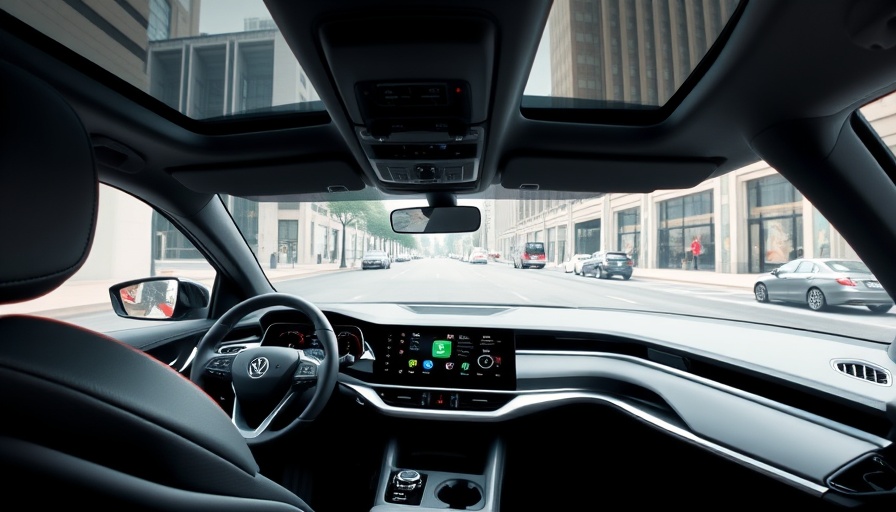
Ford's Bold Decision: What it Means for the Future of Electric Vehicles
In a significant shift for the auto industry, Ford has decided to discontinue its ambitious software-defined vehicle (SDV) development plans, a move that has raised eyebrows among car enthusiasts and industry analysts alike. The Ford FNV4 platform, which promised to revolutionize vehicle functionality and user experience through advanced software, has now been restructured into a more conventional model called FNV3.X. This change signals Ford's recognition of the complexities and challenges of integrating cutting-edge technology into its diverse lineup of vehicles.
The Promise and Challenge of Software-Defined Vehicles
The concept of software-defined vehicles has garnered considerable attention, particularly from tech-savvy manufacturers like Tesla and Rivian. These companies tout SDVs as vehicles that enhance user experience through ongoing software updates, improving features like performance, infotainment, and safety through code updates rather than mechanical changes. However, as Ford has learned, the developmental journey is fraught with challenges.
Ford's initial plans, spearheaded by Doug Field, a former Apple and Tesla executive, aimed to offer a unified software framework across its vehicle range. Yet, the anticipated benefits did not materialize as hoped. Many of Ford's traditional combustion-engine models posed unique challenges that complicated the transition to a software-centric design.
What Does FNV3.X Bring to the Table?
The new FNV3.X platform will still provide some of the expected advantages of an SDV architecture, albeit in a more limited capacity. Features such as faster over-the-air (OTA) software updates remain, enhancing the driving experience incrementally instead of through revolutionary changes. Field described the benefit as 'democratizing access to new features,' indicating that more customers might get updated technology without needing to purchase new vehicles.
Broader Implications for the Automotive Market
Ford's pivot away from the SDV approach raises critical questions about the future of the automotive industry, especially with the rise of electric vehicles (EVs). Companies aiming for a domain-based architecture, like Ford, are more adaptable in responding to diverse customer needs, given their expansive range of models. Whereas the allure of software-defined vehicles is clear, the practical application is taking a less straightforward route, prompting Ford to adapt its plans.
Consumer Insights: What This Means for You
For consumers, the changes at Ford suggest that while the industry is pushing toward modernization, the high-tech features of tomorrow may not be the singular focus consumers expect. Instead, customers can anticipate improvements over time instead of dramatic transformations in vehicle capabilities associated with SDVs. Understanding these developments is crucial for potential buyers looking for vehicles equipped with the latest innovations.
Future Trends in the Auto Industry
As automakers navigate the balance between software innovation and traditional vehicle functionality, future trends indicate that the industry may adopt a hybrid approach. Ford's decision may encourage other manufacturers to take similar stances, recognizing that blending advanced technology with traditional vehicle design could result in more practical solutions for consumers.
In conclusion, Ford's choice to halt the SDV project while still embracing incremental tech advancements reflects its commitment to meeting consumer needs efficiently. As the automotive market continues to evolve, staying informed about these developments will empower consumers to make smart purchasing decisions.
Please follow developments in the automotive sector closely as we witness how these decisions shape the future and influence consumer experiences across the globe.
 Add Row
Add Row  Add
Add 




 Add Row
Add Row  Add
Add 

Write A Comment